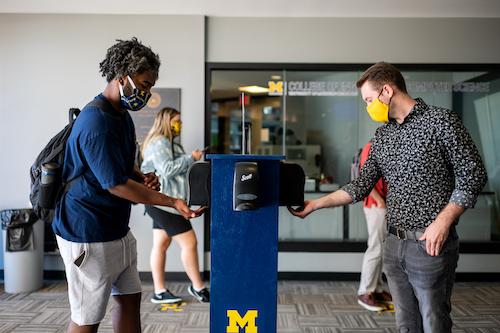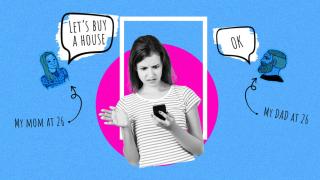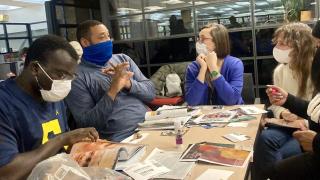
Many details for the fall semester have come into focus in recent weeks, especially since the university released guides for the faculty, staff and students who will be on-campus come September. Those two guides are packed with almost everything you need to know about building access, health and safety guidelines you’ll be expected to follow, and how to navigate specific on-campus scenarios. To answer any additional questions, university leaders hosted a virtual town hall last week, where they shared more information on testing, contact tracing, remote staffing and fall enrollment projections. We’ve summarized some of the main takeaways below, in case you missed it.
How COVID-19 testing and contact tracing will work this fall
COVID-19 testing is strongly encouraged for faculty, students and Graduate Student Instructors who will be participating in on-campus classes. Staff working on campus are also encouraged to get a COVID-19 test. UM-Dearborn has partnered with Henry Ford Medical Center - Fairlane for testing, which will be available by appointment through September 4. More information is available on the Emergency Management website; just look for "Fall Campus Testing." In addition, the university will be keeping daily logs of all faculty, staff and students who enter campus buildings in order to support an effective contact tracing system. If you get a call from a public health or university official during the fall semester, please make sure you answer or return the call. The contact tracing system will also allow university leaders to determine whether cases are isolated instances or signs of “community spread,” which could necessitate a pivot to a fully remote learning environment.
If a faculty member tests positive, what happens to their course load?
Positive tests among faculty could easily entail a leave of several weeks. Provost Sue Alcock says department chairs are responsible for putting together pre-arranged plans to cover such situations. But faculty are also encouraged to support these efforts by forming “buddy system” partnerships with colleagues who have similar subject matter expertise.
Fall enrollment looks positive
Final numbers won’t be available for a couple weeks, but early indicators point to healthy fall enrollment. Provost Sue Alcock reported that, by “head count,” we’re currently at about 96 percent of projected fall enrollment. New student enrollment is expected to be at least flat, with two orientations still to come. And enrollment in graduate programs has rebounded, coming in better than expected for returning graduate students. Alcock says that’s helping offset declines among new graduate and transfer students.
Working remotely is working
Most faculty and staff will be working remotely this fall, and Chancellor Grasso indicated that the success many are having in this format will likely mean opportunities for remote work even after the pandemic. “One of the recommendations from the strategic plan is that we should look for opportunities for people to work remotely, and this is a great test case for us,” Grasso said during the town hall. “So as we find out that we can do our jobs remotely, we will afford that opportunity to individuals as long as the jobs get done and no efficiency is compromised. But even if we were to go to a more remote atmosphere, we would want to have people come to campus on a periodic basis so we can have those serendipitous interactions and conversations that help us as well.”
Improved air circulation in buildings
Close, person-to-person transmission is still thought to be the primary method through which COVID-19 spreads. But improving air circulation in buildings can provide an extra layer of protection in indoor environments. To that end, the Facilities Operations teams have tweaked a number of building HVAC systems, allowing for an increased percentage of outdoor air in many buildings. For more details on that, check out this report from Environmental Health and Safety.
Skip the campus fall color tour
With its parklike atmosphere, campus is a beautiful place to take a walk, especially in the fall. But in an effort to keep numbers down on campus, Chancellor Grasso is asking people to do their fall color tours elsewhere this year. Plenty of parks in the metro area are still open as alternative venues. If you do venture out, please wear a face covering and follow social distancing guidelines.
How new students and faculty can get their MCards
If you’re a new student or faculty member and you’re participating in on-campus classes this fall, you’ll need an MCard for building access. University Unions & Events Assistant Director Kris Day is contacting those with immediate building access needs to schedule MCard appointments, or students and faculty can contact Day directly. Later in the semester, appointments will continue for new students and faculty who don't have on-campus needs this term.
There won’t be campus flu shots this year
For many, getting an annual flu shot at one of the campus’ pop-up clinics is a fall tradition. But given the need to reduce density on campus, that won’t be an option this year. For obvious reasons, this is not the year to skip your flu shot, and getting one is still as easy as a trip to your local pharmacy.
###
Want to view the entire town hall? Check out the video.






